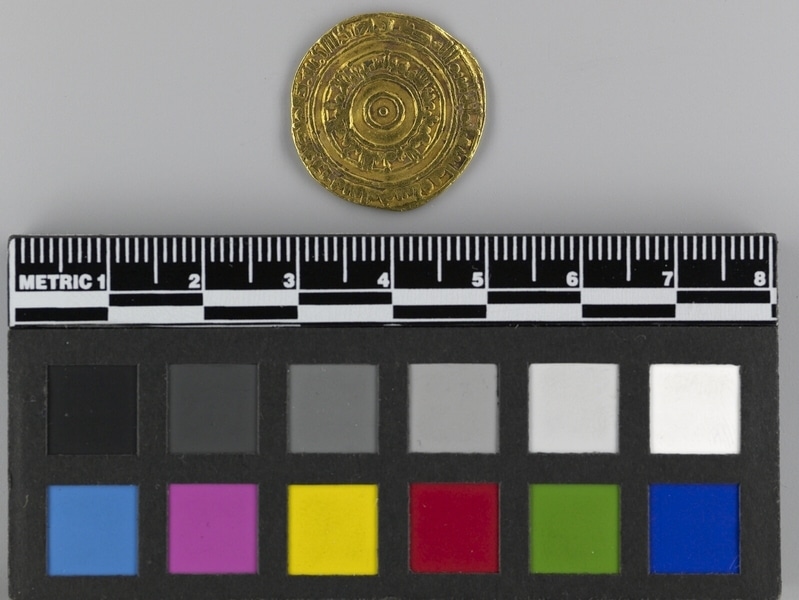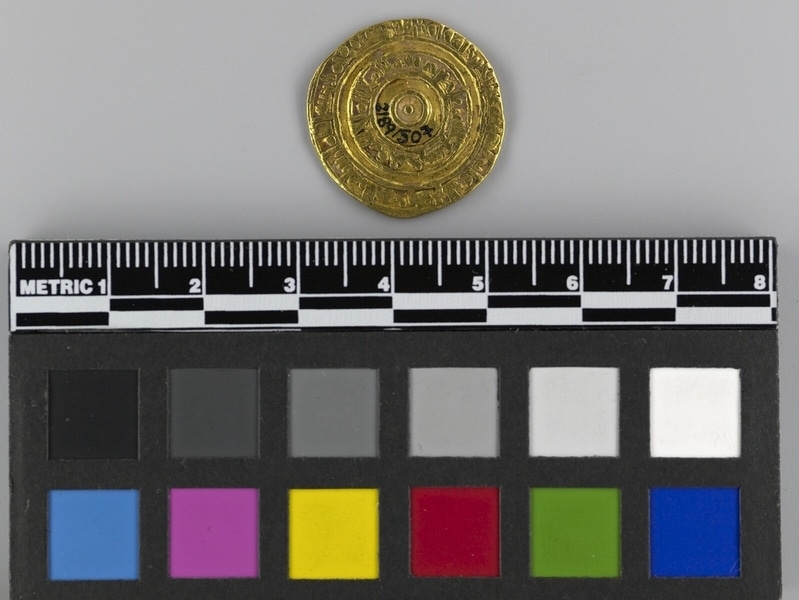Coin Item Number: 2189/507 from the MOA: University of British Columbia


Description
Both sides bear a concentric circle design with script in between the circles.
History Of Use
Gold dinars were the primary currency of the Fatimid Caliphate, a Muslim kingdom based primarily in Egypt. These coins circulated as the dominant currency from North Africa to Syria. Dinars such as this were typically made of between 93%-99% pure gold, ensuring widespread acceptance in markets throughout the Muslim world. The gold likely came from Nubia and the Fatimid economy was highly reliant on this supply for the minting of currency, making the political stability of the region a high priority for Fatimid rulers. For most of the Caliphate's existence, the Fatimids ensured friendly relations with the local people but during the reign of Saladin, in the 12th century, a breakdown in relations led to a gold shortage and economic crisis in Egypt. This then led to the end of the dynasty. The Fatimid Caliphate followed the Shia sect of Islam and ruled in opposition to the previously dominant Abbasid Caliphate, which followed the more conventional Sunni Islam. The Fatimids claimed to be the true political and religious successors of the prophet Muhammad, and the design and minting of dinars reflected this. The concentric design of dinars was fashioned to be distinct, recognizable, and different from other coinage, especially Abbasid coinage. The purity of the coins was meant to indicate the prosperity and reliability of the Fatimid state. These dinars were inscribed with various religious statements, mostly the Shahada or profession of the Muslim faith. Other common inscriptions referred to sections from the Quran, or to the holy titles of the minting ruler. These inscriptions served as an ideological assertion of Fatimid religious authority and legitimacy.
Item History
- Made in Tunisia ? or Egypt ? between 975 and 996
- Owned by Sid Leary before 1950
- Owned by Florence Leary between 1950 and June 1957
- Received from Florence Leary (Donor) during June 1957
What
- Name
- Coin
- Identification Number
- 2189/507
- Type of Item
- coin
- Material
- gold metal
- Overall
- height 0.112 cm, diameter 2.163 cm
Who
- Culture
- North African
- Previous Owner
- Sid Leary and Florence Leary
- Received from
- Florence Leary (Donor)
Where
- Holding Institution
- MOA: University of British Columbia
- Made in
- Tunisia ? or Egypt ?
When
- Creation Date
- between 975 and 996
- Ownership Date
- before 1950 and between 1950 and June 1957
- Acquisition Date
- during June 1957
Other
- Item Classes
- metalwork
- Condition
- good
- Accession Number
- 2189/0507